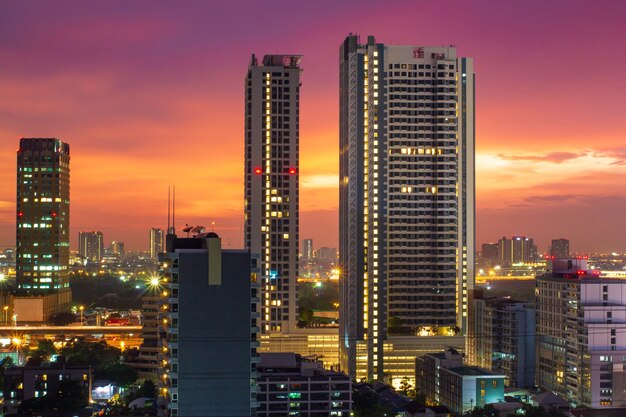What to Consider When Choosing Vacation Destinations For Families | A Travel Planning Guide
BY Abdul Aziz Sep 25, 2021
Family vacations may sound like a fun idea, but any parent can tell you that planning is half the battle. With the wrong plan, your reward is a chorus of “Are we there yet?” and days trapped in close quarters, instead of an opportunity to unwind. Even so, it’s clear that the right vacation can be a great way to make memories with those you love. One study even suggests that these trips can be crucial “happiness anchors,” or memories that can even help kids get through tough times. Of course, that’s only the case as long as you plan well. And choosing vacation destinations for families is a crucial part of that plan. How can you ensure that you’ve picked the right place for your getaway? If you're not sure where to start, read on for the tips you need to know. Choosing Vacation Destinations For Families | Smart Tips You Need Choosing vacation destinations for families probably starts with a big, fat family discussion. We play this paper chit game with the names of a few places written on them. Now, those chits are shuffled, and the youngest one is asked to pick one chit. The place written on the chit becomes our holiday destination for the year. Nevertheless, choosing vacation destinations for families may not be as fun as it sounds. You need to consider a lot of things. So, here, we have created a Tour and Travel guide to make your travel planning easy. Nail Down Your Budget For most families, one of the most important factors when choosing vacation destinations is budget. Take some time to figure out how much you can afford to spend on the trip upfront, as this can help you decide whether the total package will fit into that figure. From there, planning your family vacation budget can feel difficult or even overwhelming, but it doesn’t have to be. Make sure to follow some basic budget-friendly planning tips like booking early or considering off-season dates. You can also visit some reliable discount sites to find affordable family vacation packages and other best deals. Suppose you’re on a tight budget. You can still find great vacation spots for your family by cutting some extras. For example, you may look for fantastic travel destinations with hotels and accommodations that offer complimentary breakfast during your stay. This will allow the entire family to save some costs on one meal each day, making the whole trip budget-friendly. Consider the Season and Climate Next, it’s time to think about the big picture: what general types of destinations are you looking for? If you’re vacationing in the winter, are you hoping to make the most of seasonal snows with some kid-friendly sledding or skiing? Or would you rather escape the cold to relax with your family on a warm beach? There’s no right or wrong answer, but having a chat with your family to gauge everyone’s preferences can help point you in the right direction. Thankfully, many beautiful destinations are worth seeing at every time of the year. For example, if your family loves to travel in the winter, you must not skip St. Moritz. It’s one of the most visited tourist spots during the cold months. Aside from the town’s snow-capped mountains and spectacular ski resort, you and your family can enjoy many winter activities when you visit St. Moritz. From ice skating and snowshoe hiking to relaxing spa treatments, there’s something for everyone. If you’re going to St. Moritz for the first time, check out some reliable travel websites to learn more about the place and what your family can do upon arrival. Think About Holidays and Seasonality There’s another type of season to consider when you’re planning a vacation: peak season. If you have younger kids and want to avoid the stress of a crowded trip, it might be worth it to wait until low- or shoulder season to book. On the other hand, if you want to make the most of your kids’ time off of school, summer may be the only time of year to head to their favorite theme park! Don’t forget to also think about holidays and festivals in the area in question. Are you looking to celebrate a family-friendly Mardi Gras in New Orleans or Rio, or do you want to head to your favorite mountain getaway during a local fall festival? Or do you want to spend the holidays on a private island to enjoy peace and serenity with your family alone? Make sure to consider these special dates as you plan. Factor In the Length of the Trip Whether you’re traveling within the constraints of school vacation or you have total flexibility to choose the dates, it’s important to think about the length of your trip. Even if everyone’s thrilled with the idea of camping, for example, is the area worth a week-long trip? If you’re planning a weekend getaway, will it feel too overwhelming to visit a huge city with a wide range of activities? If that’s the case, consider a vacation spot that can accommodate the length of your trip. But again, there’s no right or wrong answer here, but you’ll need to consider your trip’s timeline as you whittle down you're shortlisted. That way, you can get the most out of your family vacation without compromising work and your children’s school. Think About the Distance to Your Destination Any parent can tell you that there’s nothing worse than being trapped on a long drive or flight with bored and frustrated children. As you consider your options, make sure you’re being realistic about what travel times your kids can endure, depending on their ages. The goal is to find an area that hits the sweet spot between a solid destination and one that’s accessible enough to reach without added stress. Research Your Accommodations Even if you think you’ve found the perfect destination, it’s important to factor in the accommodations where you’ll spend most of your time. If you’re looking at major cities or if you’re booking far in advance, you may find yourself with a wide range of options to look at. On the other hand, if you’re hoping to get on a last-minute trip, a little research into the available lodgings may show that you’re out of luck!]. When booking a hotel or vacation rental, it’s important to consider the rental’s size, its proximity to your chosen activities, its rules and policies, and its site security. The last thing you’ll want is a cramped space far from your destination’s main attractions. For those looking to enjoy both relaxation and outdoor adventure, choosing accommodation that complements the destination is key. If you're heading to a mountain getaway, exploring options like Whistler Vacation Rentals can provide an ideal balance of comfort and adventure. With a range of properties offering stunning views, ski-in/ski-out access, and family-friendly amenities, Whistler makes for a fantastic holiday destination in any season. In addition, if you travel to the same common family-friendly areas—such as Orlando—on a regular basis, it might be a good idea to find a property you can return to over and over again. Check out programs like the Disney Vacation Club, for example, or take a look at resale listings for a budget-friendly alternative. Research the Activities in the Area If you haven’t consulted your kids up to this point, now is a great moment to bring them in for a quick family meeting, especially if they’re old enough to get opinionated. What kinds of activities would factor into their ideal vacation? Can you find a location that offers the historical sites you want to see as well as the theme parks or beaches they’ll love? The best destinations will strike the right balance between having plenty of activities for kids as well as great options for educational fun and physical activity. Set Aside Time For Choosing Vacation Destinations For Families Here’s the bottom line: choosing vacation destinations can be a trying process, but it’s well worth the time and effort. Finding the right place to host your next getaway is a surefire way to start the trip off on the right foot, giving you and your family ample opportunities to make long-lasting memories. Don’t forget to start as far in advance as possible for the best deals and options! Looking for more of the tips you need to make the most of your travels? Whether you’re planning to tour your city or take a trip around the world, be sure to check out our other posts for additional insights. Choosing Vacation Destinations For Families | Top Places You Can Visit This Season Now, you know about the tips and tricks for choosing vacation destinations. This is the time to pick the best destinations among the options available. So, let’s explore! 1. Sri Lanka Sri Lanka is a melting pot of culture, history, wildlife, and natural beauty. It has more than 100 protected wildlife areas. There, you can meet elephants, sloth bears, leopards, and other wild animals. 2. Austria A sound public transportation facility helps you to make your family trip to Austria easy and budget-friendly. The country has a beautiful landscape. Further, Austria allows you to take part in various outdoor activities like skiing and hiking. 3. France Paris in France is the ultimate family holiday destination if you have the budget. Taking a walk along the streets of Paris is an experience in itself. Further, you cannot miss iconic landmarks like the Eiffel Tower, Notre Dame or the Louvre Museum. Moreover, you can explore the beautiful beaches and caves in France. Read Also: 7 Must-Have Items For Your Summer Vacation Looking For Your Next Fun-Filled Family Vacation: Head To Aquaventuras Park














